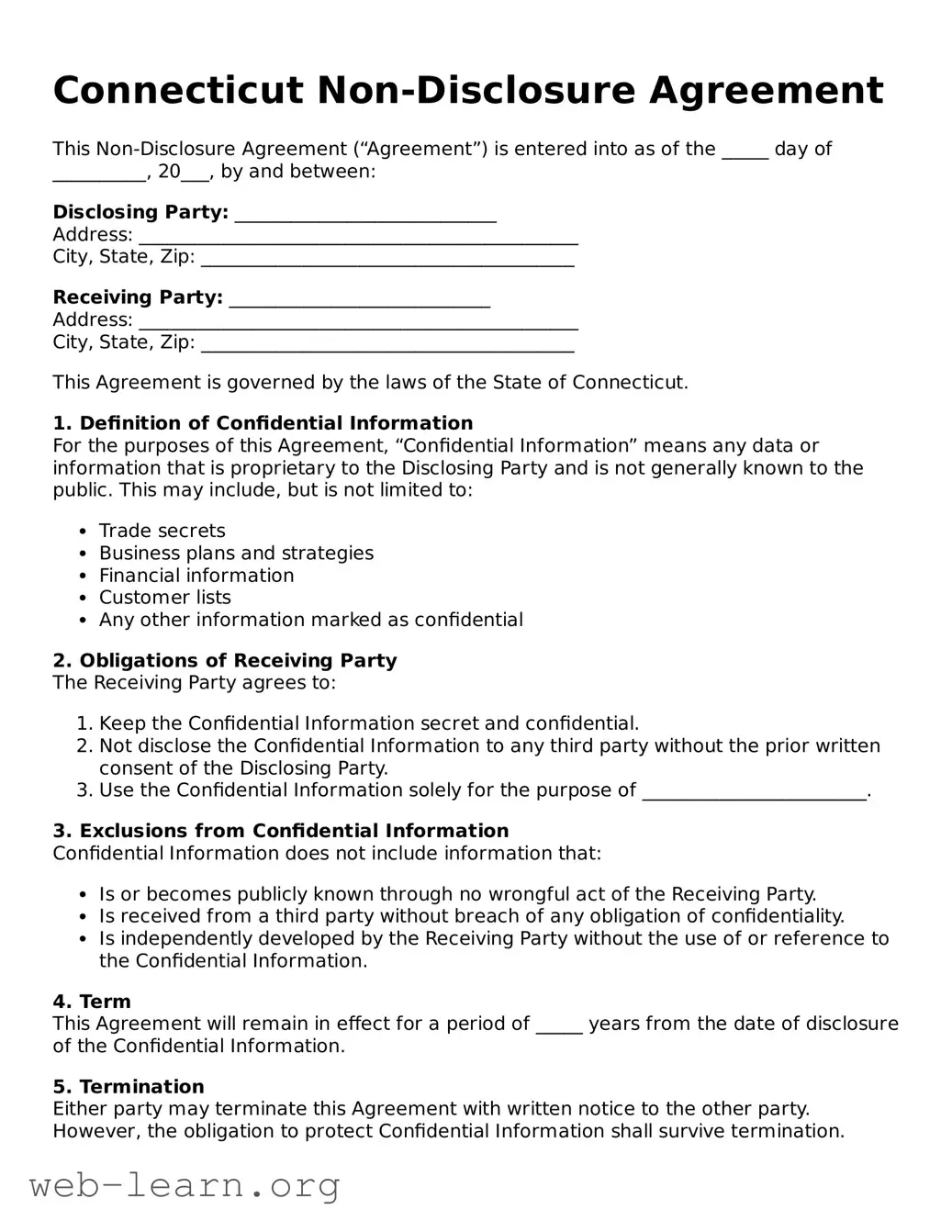Connecticut Non-Disclosure Agreement
This Non-Disclosure Agreement (“Agreement”) is entered into as of the _____ day of __________, 20___, by and between:
Disclosing Party: ____________________________
Address: _______________________________________________
City, State, Zip: ________________________________________
Receiving Party: ____________________________
Address: _______________________________________________
City, State, Zip: ________________________________________
This Agreement is governed by the laws of the State of Connecticut.
1. Definition of Confidential Information
For the purposes of this Agreement, “Confidential Information” means any data or information that is proprietary to the Disclosing Party and is not generally known to the public. This may include, but is not limited to:
- Trade secrets
- Business plans and strategies
- Financial information
- Customer lists
- Any other information marked as confidential
2. Obligations of Receiving Party
The Receiving Party agrees to:
- Keep the Confidential Information secret and confidential.
- Not disclose the Confidential Information to any third party without the prior written consent of the Disclosing Party.
- Use the Confidential Information solely for the purpose of ________________________.
3. Exclusions from Confidential Information
Confidential Information does not include information that:
- Is or becomes publicly known through no wrongful act of the Receiving Party.
- Is received from a third party without breach of any obligation of confidentiality.
- Is independently developed by the Receiving Party without the use of or reference to the Confidential Information.
4. Term
This Agreement will remain in effect for a period of _____ years from the date of disclosure of the Confidential Information.
5. Termination
Either party may terminate this Agreement with written notice to the other party. However, the obligation to protect Confidential Information shall survive termination.
6. Miscellaneous
This Agreement constitutes the entire agreement between the parties regarding its subject matter. It supersedes all prior agreements and understandings, whether written or oral.
This Agreement is signed on the date first above written.
Disclosing Party:
Signature: _______________________ Date: _______________
Receiving Party:
Signature: _______________________ Date: _______________
